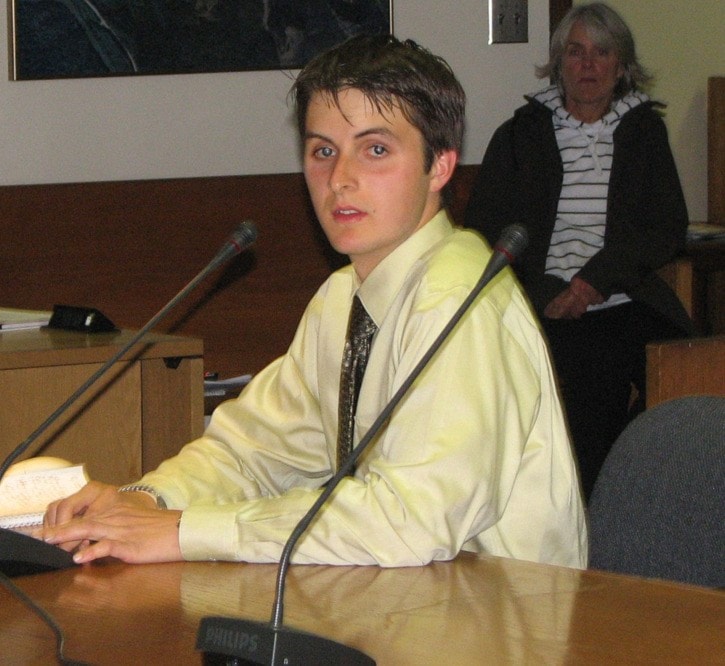Sean Carlson of Prince Rupert has provided a twist to the saying “go big or go home”.
At Monday night’s City Council meeting, the 21-year-old UBC environmental engineering student brought a big idea back to his hometown by suggesting the City should install an incinerator in the downtown core for handling municipal solid waste.
At school this past year, Carlson and a classmate prepared a case study about Prince Rupert and determined there could be up to an 81.5 per cent reduction in Green House Gas emissions if the City began incinerating, rather than sending all solid waste to the landfill.
“For a lot of municipalities, we landfill garbage to keep it out of sight and out of mind to the public. But for tonight’s presentation I wanted to repurpose our view of garbage and view it as a resource, as a money-making tool that our city can use to provide green energy,” Carlson told council as he began his presentation.
The downtown location might seem an odd idea, Carlson said, but it could revitalize and bring new to life to the area.
“It would send a strong message about Prince Rupert’s commitment to green energy and global sustainability, not only in Prince Rupert, but to people visiting from around the world and different parts of our province.”
In addition to reducing the landfill, an incinerator could generate enough electricity for 2500 homes, nearly half of the homes currently occupied in Prince Rupert, he continued.
To estimate costs for building an incinerator, Carlson contacted the Burnaby Incinerator and learned it cost around $80 million to build it in 1988. Bringing that to 2011 dollars, Prince Rupert would be looking at around $135 million.
Even though Prince Rupert’s facility would handle much less waste as Burnaby, it would still need the same type of facility.
Carlson proposed an incinerator project could be funded through potential public/private partnerships with the City and entities such as the Prince Rupert Port Authority, Pacific Northern Gas and BC Hydro.
Operational costs would be around $1.1 million, but there would be fuel saving costs because garbage trucks wouldn’t be driving the 16km round trip to the landfill on Ridley Island if the facility was located downtown.
In addition, Carlson envisions a 24/7 operation, meaning more full-time employees with skilled-labour opportunities, and more opportunities for younger workers interested in power engineering or crane operation.
Potential revenue could be $2 million in electricity, plus the sale of bottom ash for road construction or landfill cover, district heating, sold to heat municipal buildings, replacing natural gas, and scrap metal.
“The City would also collect dumping fees, so all the revenue you have now would still exist,” he added.
Showing an aerial photograph of an incinerator in Mora, Sweden, a community that produces about 20,000 tonnes of garbage a year, twice the amount of garbage as Prince Rupert, Carlson pointed out the plant’s proximity to a neighbourhood.
In the photograph, the grass is green and there are many trees everywhere.
“I’m hoping to change your view on what incineration is. Over the past years, these processes have had to become very clean,” he said.
The next steps for the City, Carlson suggested, are to create a focus group, tour other facilities, hire a consultant or find university students that would be interested in researching the project.
“It would be a great way of involving youth who are away studying and bring people out this way,” he added.
Councillor Sheila Gordon-Payne praised him for the presentation and asked if he would be interested in participating in a focus group if council decided to go that route.
“I would love to do that,” he answered.
“That’s why I chose to do this project in the first place. Out of my own interest in my community I looked at incinerator versus landfills. I would be quite pleased to be able to be a part of that, even if I am in Vancouver.”
